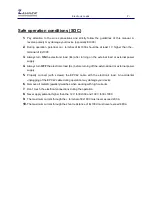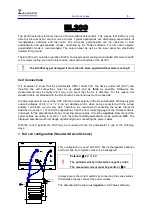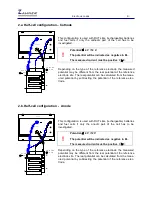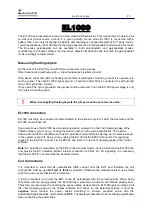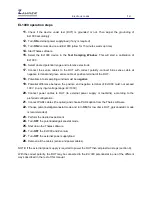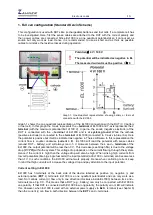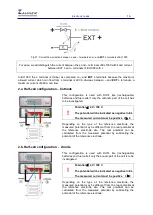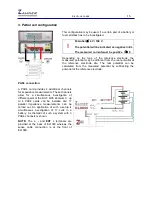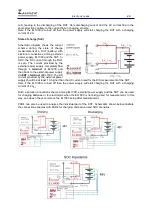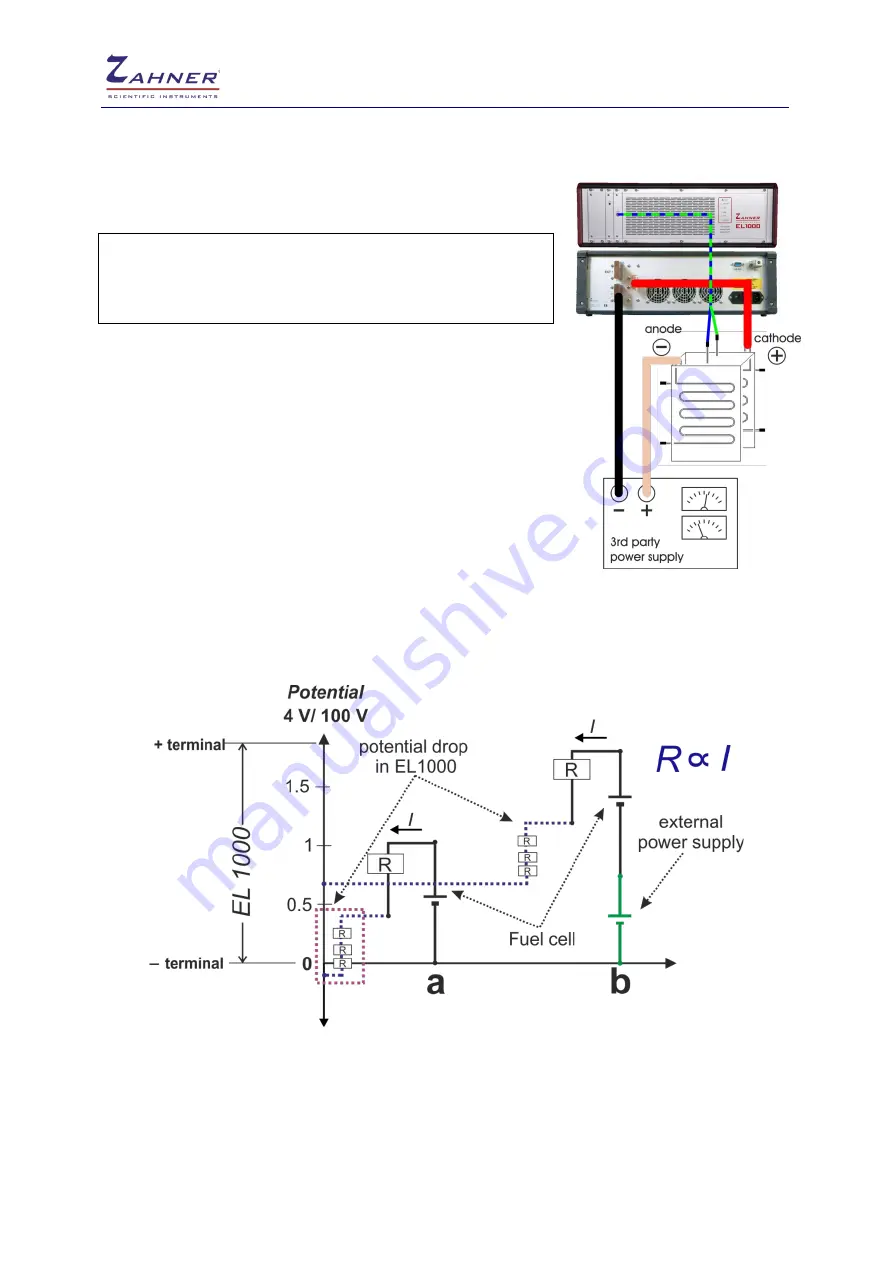
Electronic Loads
-
20-
5.c. Compensation for voltage drop (Zero Volt Option)
In contrast to the last two series arrangements, the DUT is not
reversed in zero volt option.
!
Set potential
≤
4 V / 100 V
The potential will be indicated as negative in EL.
The measured current must be positive I
≥
0
During normal operation of fuel cells the current flowing through the
cell is usually very high (few hundred amperes). At such high
currents, the potential drop (
Δ
V
=
I*R
) is also very high. Fuel cells
normally have a potential of around 1 V and one has to keep in mind
to apply the currents with which the voltage drop in the system is
less than the potential of the fuel cells. If in EL1000, a current value
is set (galvanostatic mode) for which the voltage drop will exceed
the fuel cell potential then the EL1000 will not reach the set current
value.
Graph 4 shows the voltage drop through the resistance (R) of the
system. Additionally, in EL1000, there are some additional
resistances (e.g. shunt resistances and so on) which lead to further
voltage drop. Graph 4(
a
) shows this two-steps voltage drop for very
high currents. Since the voltage drop here is higher than the potential of the fuel cell hence the set
current (in EL1000) is not achievable. Therefore to compensate for the voltage drop, a small additional
potential of usually 1 V is provided by the external power supply to the fuel cell to compensate for the
high voltage drop at high current applications (Graph 4
b
). This keeps the output potential between the
+
and
– terminals
of EL1000 positive, and enables the high current experiments with EL1000.
Graph 4: Compensation of voltage drop in a system with external power supply at high current applications


